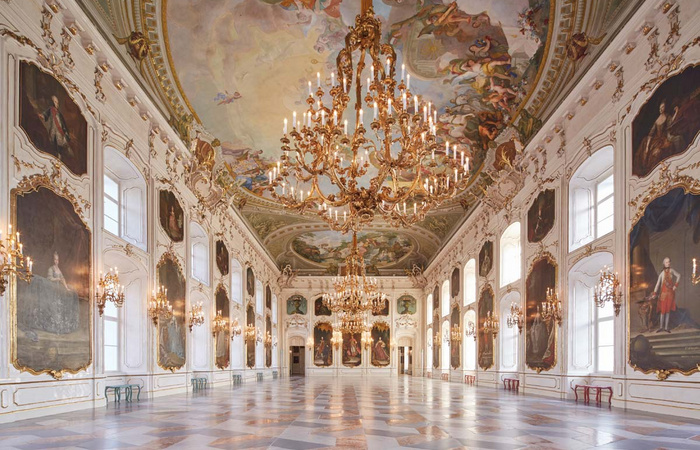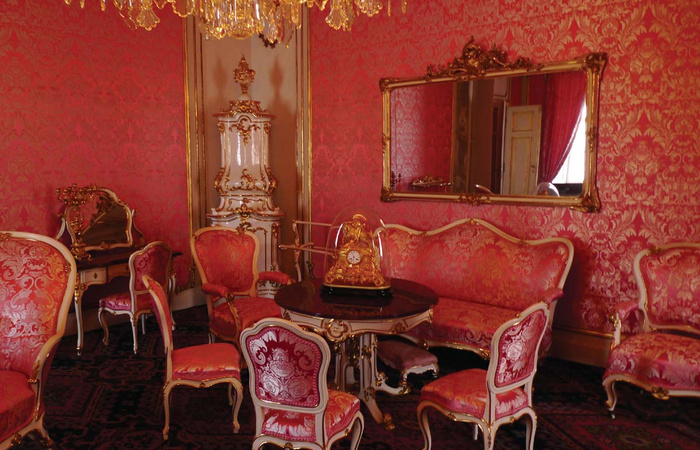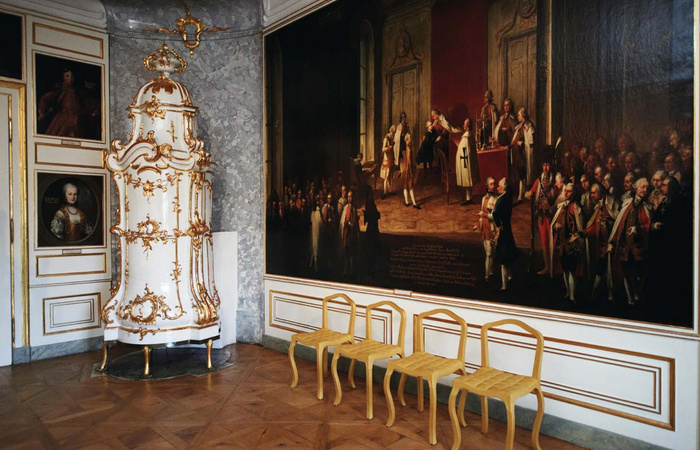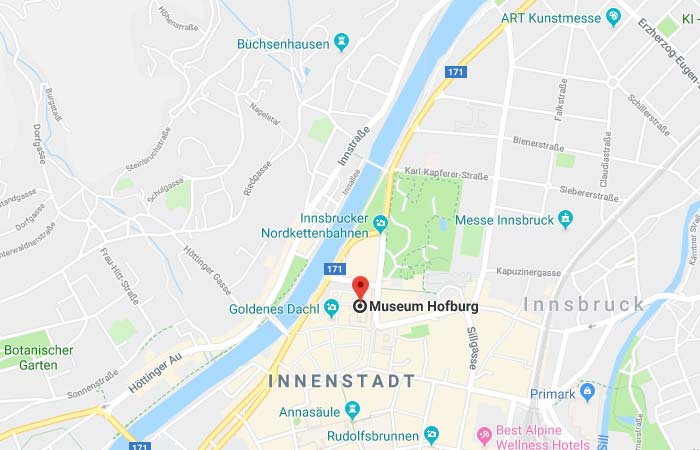Wedding Site of Leopold II
Den Räumlichkeiten der Hofburg Innsbruck wurde im Jahre 1765 große Ehre zuteil, denn Maria Theresia lies hier die Vermählung ihres Sohnes Leopold II. mit Maria Ludovica von Bourbon ausrichten. 2.000 Personen, als geladene Gäste und Großteils Zuseher, nahmen an der Feier teil, die rund 14 Tage andauerte.
Innsbruck’s Imperial Palace was greatly honoured in 1765, when Empress Maria Theresa selected it as the site of the mar-riage between her son Leopold II and Maria Luisa of Spain. 2,000 invited guests and spectators took part in the celebration, which lasted about 14 days.





